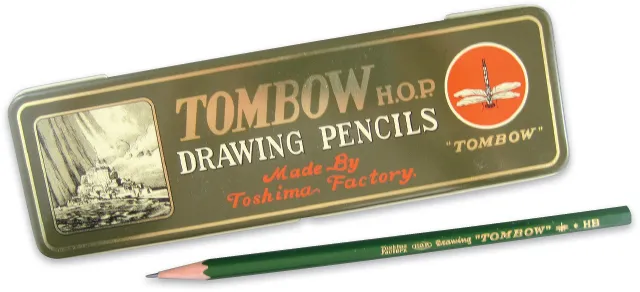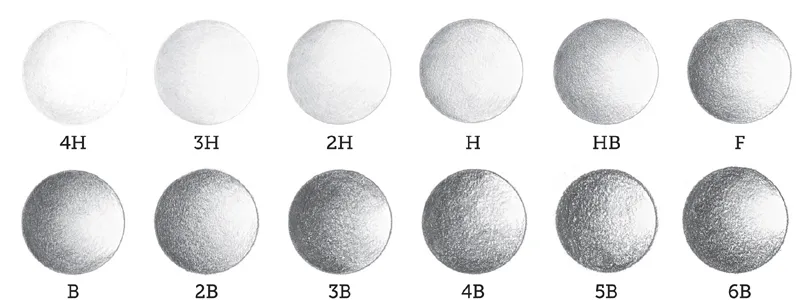
eBook - ePub
Pencil Magic
Surprisingly Simple Techniques for Color and Graphite Pencils
Marie Browning
This is a test
Condividi libro
- 250 pagine
- English
- ePUB (disponibile sull'app)
- Disponibile su iOS e Android
eBook - ePub
Pencil Magic
Surprisingly Simple Techniques for Color and Graphite Pencils
Marie Browning
Dettagli del libro
Anteprima del libro
Indice dei contenuti
Citazioni
Informazioni sul libro
Discover simple but sophisticated fine arts techniques to use with both graphite and colored pencils to create beautiful papercrafts, art journals, mixed media, scrapbooks, and more.
Domande frequenti
Come faccio ad annullare l'abbonamento?
È semplicissimo: basta accedere alla sezione Account nelle Impostazioni e cliccare su "Annulla abbonamento". Dopo la cancellazione, l'abbonamento rimarrà attivo per il periodo rimanente già pagato. Per maggiori informazioni, clicca qui
È possibile scaricare libri? Se sì, come?
Al momento è possibile scaricare tramite l'app tutti i nostri libri ePub mobile-friendly. Anche la maggior parte dei nostri PDF è scaricabile e stiamo lavorando per rendere disponibile quanto prima il download di tutti gli altri file. Per maggiori informazioni, clicca qui
Che differenza c'è tra i piani?
Entrambi i piani ti danno accesso illimitato alla libreria e a tutte le funzionalità di Perlego. Le uniche differenze sono il prezzo e il periodo di abbonamento: con il piano annuale risparmierai circa il 30% rispetto a 12 rate con quello mensile.
Cos'è Perlego?
Perlego è un servizio di abbonamento a testi accademici, che ti permette di accedere a un'intera libreria online a un prezzo inferiore rispetto a quello che pagheresti per acquistare un singolo libro al mese. Con oltre 1 milione di testi suddivisi in più di 1.000 categorie, troverai sicuramente ciò che fa per te! Per maggiori informazioni, clicca qui.
Perlego supporta la sintesi vocale?
Cerca l'icona Sintesi vocale nel prossimo libro che leggerai per verificare se è possibile riprodurre l'audio. Questo strumento permette di leggere il testo a voce alta, evidenziandolo man mano che la lettura procede. Puoi aumentare o diminuire la velocità della sintesi vocale, oppure sospendere la riproduzione. Per maggiori informazioni, clicca qui.
Pencil Magic è disponibile online in formato PDF/ePub?
Sì, puoi accedere a Pencil Magic di Marie Browning in formato PDF e/o ePub, così come ad altri libri molto apprezzati nelle sezioni relative a Arte e Tecniche artistiche. Scopri oltre 1 milione di libri disponibili nel nostro catalogo.
Informazioni
Argomento
ArteCategoria
Tecniche artisticheAll About Graphite Pencils
The simple pencil is what great people use to create great art. Sculptures, architecture, and symphonies start with a humble pencil sketch or note. You will get to start your masterpieces with quality drawing pencils of different point strengths, and mechanical pencils, too.
Pencils have two main components: a graphite core, known as the lead, and a plastic or wooden body that encases the lead. Some pencils have an eraser at one end. Modern pencils got their start in Roman times when lead was used to make marks on papyrus. Modern pencils do not actually contain any lead; they are made with nontoxic graphite. A large deposit of graphite was discovered in England in 1564 and quickly replaced lead, as it leaves a darker mark. However, graphite is very brittle and requires a holder to prevent it from breaking. Graphite pieces were first wrapped with string and then later inserted into hollowed-out wooden sticks: thus the wood-cased pencil was born.
In the early 1900s, pencil manufacturers needed new sources for wood. Incense cedar from California’s Sierra Nevada mountains was found to be a superior wood for pencil manufacturing and soon became the top choice for quality pencil makers around the world. The incense cedar woods are harvested on a sustained-yield basis. Sustained-yield means that the annual growth of the forest is greater than the amount of wood harvested from the forest.
Hardness
Depending on how hard the lead is, pencils make different marks. A hard pencil lead leaves light, fine marks that are great for drawing precise details. A soft pencil lead leaves dark, heavy marks that are typically used for filling in large areas, or for shadows. It mainly comes down to personal preference which leads you choose to use; you have to play around to figure out what works for you. Not all pencil leads are created equal, though: they vary in strength, smoothness, smudge resistance, and hardness.
My preferred pencils, and the pencils used in this book, are Tombow drawing pencils, which offer superior, extra-refined, high-density graphite. They are super smooth when drawing and shading, making it easy to create perfect graduated shades. They have a high point strength and are break resistant. Smear-proof lines help produce crisp, clean drawings with the added value of slow wear for smooth, dense writing. They are available in point strengths from very hard, 6H, to very soft, 6B. You can use your choice of pencil while practicing the skills in this book, but keep the pencil quality in mind as you shop.
According to the European scale system, pencils are graded “H” (hardness) and “B” (blackness), with an accompanying number to describe how hard or how black the pencil is. The more H’s you have, the harder the lead and the lighter the lines. The more B’s you have, the softer the lead and the darker the lines. The designation HB occupies the very middle of the scale; this is the lead in most mechanical pencils because of its suitability for writing. There’s also F (fine), which is between HB and B, and which makes dark, fine marks.

In 2013, Tombow celebrated its 100th birthday in making superior pencils and premium drawing and office supplies. Shown here is the Vintage Collectors Edition pencil set.

Shown are Tombow MONO drawing pencils of different hardnesses and a mechanical pencil.

Here you can see shaded circles going from very hard leads to very soft leads. In the middle is the most common mechanical pencil lead, HB, which is very suitable for writing.
Holding a Pencil
The first step to successful pencil drawing is controlling the pencil’s movement so every mark you make works toward creating the effect you want. The best grip is the one you already use. Trying to change your grip artificially is probably the worst thing you can do. However, many people ask me the proper way to hold a pencil, so here are a few recommended grips. Try to learn to use these as naturally as possible.
The basic tripod grip is most likely what you use for writing. You control your grip with your fingers, and it is an ideal way to hold your pencil for drawing. Your hand rests on the table for support and the upright position of the pencil allows for accurate shading with the tip, rather than the side.
The extended tripod grip uses the same hold as the basic tripod grip, but with the fingers further up the pencil. This is a comfortable way to hold a pencil for drawing and allows for more freedom and a light touch when shading.
The overhan...